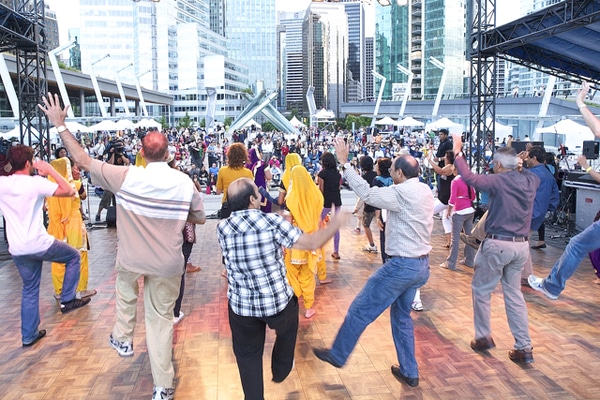What is this issue about?
British Columbia is a diverse province with many different people from different countries. This diversity brings with it the need to create welcoming communities.
The Province of B.C.’s WelcomeBC website highlights three key aspects of welcoming communities, where all residents:
- participate in the social, cultural, and economic life of the region without discrimination
- embrace and celebrate the diversityi of the whole community
- feel welcome, immigrants realize their full potential, racism is eliminated, and cultural diversity is valued
Why are welcoming communities important for health and well-being?
Welcoming communities are important for the health and well-being of everyone who lives in British Columbia. When racism, language barriers, a lack of cultural sensitivity, and a feeling of not belonging in the community prevents people of different backgrounds from accessing community services, their mental and physical health suffers. Being cognizant of the different cultural requirements around health required by different cultural groups can help local governments facilitate health services that can improve health outcomes.
Discrimination can lead to stress, difficulty finding a well-paying job, and housing discrimination, which are factors in poor physical and mental health. Local governments can take action against discrimination through policies, events, and programs, acting on knowledge about community demographics to create positive environments and positive health outcomes.
Welcoming communities are important in terms of building community. Celebrating and embracing diversity can encourage immigrants and minority groups to participate more fully in community life, which benefits the whole community. Working together, people from many different backgrounds can accomplish much more in terms of building healthy communities than they can accomplish working apart. This also increases their sense of community cohesiveness and belonging, makes communities safer and more secure, increases volunteerism, and creates good relationships between civic officials, local government staff, and area residents.
Did You Know?
- According to the 2011 National Household Survey, British Columbia had 232,285 Aboriginal Peoples (5.4% of the total population), 185,115 recent immigrants (immigrated between 2006 and 2011; 4.3% of the total population), and 1,180,870 visible minorities (27.3% of the total population).
- Aboriginal Peoples experience significantly worse health outcomes than the overall Canadian population, with life expectancies of 5 to 14 years less than the Canadian average.ii
- By 2031, British Columbia could have as many as 373,000 Aboriginal Peoples, composing as much as 6.3% of the population.iii
- By 2031, British Columbia could have as many as 2,620,000 visible minorities, composing as much as 40.8% of the total population.iv
Why do welcoming communities matter for local governments?
The level of ethnic and cultural diversity varies between different communities around the province, but all communities have peoples of different ethnic backgrounds. Many of the programs and policies designed for Aboriginal Peoples and immigrants are offered through federal government departments such as Aboriginal Affairs and Northern Development Canada (AANDC) and Citizenship and Immigration Canada (CIC). However, local governments also run many programs and processes (e.g. library programs, parks and recreation programs, community consultations) that affect Aboriginal Peoples and immigrants, so the needs of these groups should be considered. According to the Alberta Urban Municipalities Association, municipalities have several strengths and capacities that make them crucial actors in reducing racism and discrimination:
- political clout
- governance of essential service delivery
- capacity to influence public opinion and bring together different interests
- moral authority to influence other organizations and government




